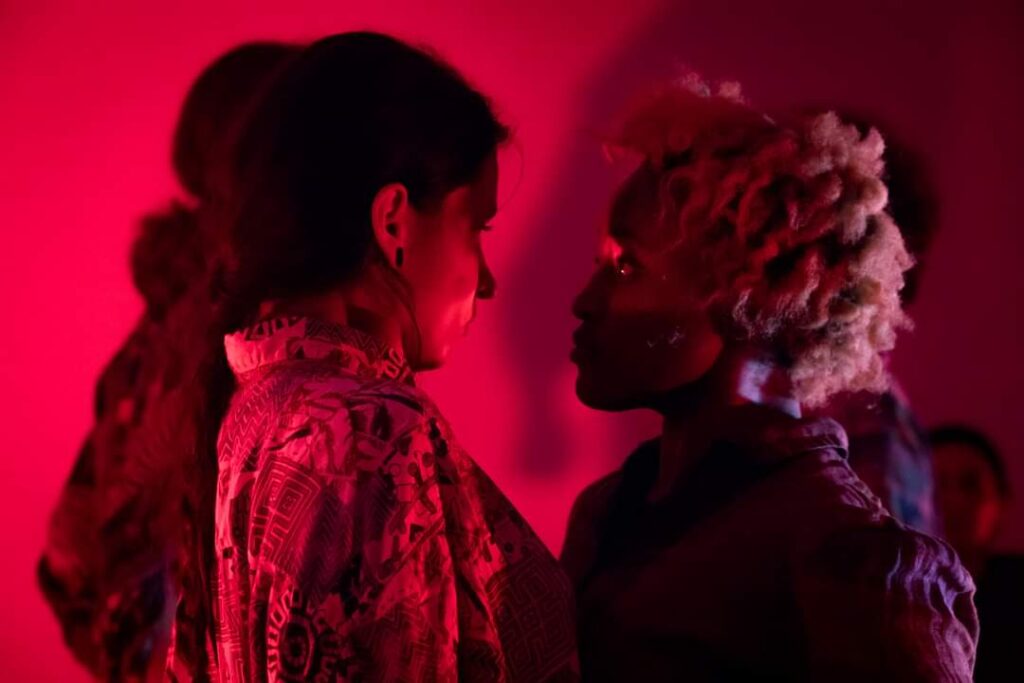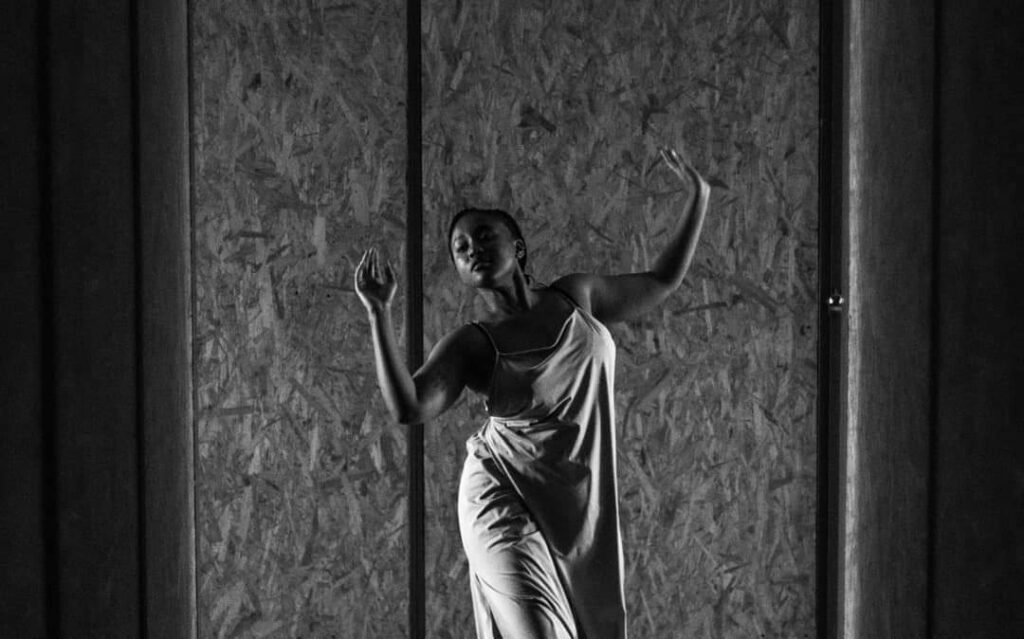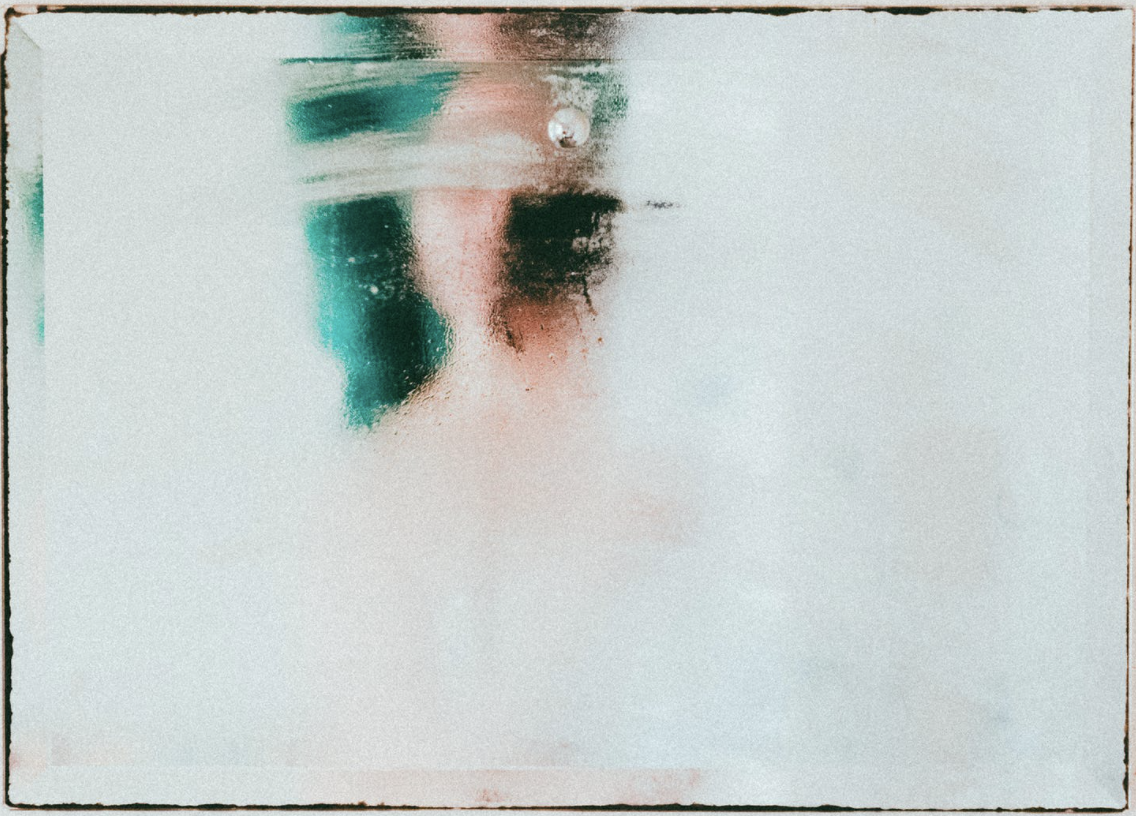I first met Kemelo at an art event in Vienna where she also performed a dance piece of hers and was blown away by it. Her art is just so genuine, clear, and honest, sometimes much so that it hits you deeply. But that’s good because it makes you feel and become aware of what’s going on around and inside you and eventually, it makes you see, really see.
For the following I asked Kemelo if she wants to do an interview with me:
Luna Maluna Gri: Tell me a bit about yourself and your work
Kemelo Sehlapelo: I consider myself to be a contemporary dancer, performance artist, writer, and teacher. I mainly teach English and dance and pilates. I’m very interested in merging a lot of disciplines together. Hopefully, I can become an art therapist, so that I can merge my love for art with my love and passion for creating mental illness awareness and mental health awareness.
LMG: How and why did you start creating art?
KS: My dancing began at a really young age when I was three and I think that my parents were just a bit overwhelmed because I was very hyperactive. So they were like; okay let’s put her somewhere where she can use that energy, and then I just ended up loving it so much. And arts in general; I mean I have always been surrounded by art. Mainly music and kind of creating lyrics and these things, writing…. But my parents are not really in the arts field. My dad has a management position and my mum works in education, but I always felt like art is inherently a part of my culture, like in terms of black culture and the cultures in South Africa. Art is inheritance, it’s a natural thing, like rhythm and colours and different patterns and these things. So I do think that my creative identity has been shaped a lot by my actual identity, in terms of my ethnicity and culture and these things.
LMG: What role does dancing, writing, etc. play for you?
KS: They play a really big role in my life. I think that every day I create something. Sometimes it’s intentional, in the sense that I set a goal to create a specific thing or maybe write a poem or edit something but sometimes, and I think that a lot of the time it’s unintentional, and I just go about my day feeling like I want to create, feeling the need or the urge to create. So it plays a very big role in my life. So much so that many of my friends in my circle, my close circle, are artists to some degree, and I don’t think I chose them like that, I think that we gravitate towards each other as artists. So yeah, a very big role.
LMG: What is your experience with the art world?
KS: Well, I think I have to break it down in terms of my experience with the dance world, which is for me, the main experience I would say, versus writing or those circles. In the dance world, it’s been a bit of a mix, in terms of positive and negative. Just because I have to acknowledge that so much of the dance world is very elitist and very much comes down to who you know or how you look, and there’s a certain way that you need to look. A lot of companies are now on this wavelength of trying to dismantle this but yet they still won’t hire someone who looks like a “normal person”. For example; if they are hiring a woman, a woman doesn’t look like she has not hit puberty yet. You know, a woman who looks healthy. It’s these things which I think is such a virus in the world where you feel the necessity to change aspects of yourself and that’s why my trajectory has changed because when I got serious with dancing, I always imagined myself in a company setting, falling under the authority of a company director and I’m there and I have to follow what they say and do what they say, but now I’m realizing that I have more freedom to create and to express myself in the body that I am in and not feel ashamed about the body I am in, being a free dancer, which is really unfortunate. I mean, regardless, I will say that my experience now with these worlds, especially the dance world, has been more positive, but that’s because I had to block out a lot of things and it’s a skill I had to learn.
LMG: Is there something you want to change about the art world? If yes, what and why?
KS: Yeah, I think one of the things I’d like to change this hypocrisy. I feel like a lot of the times, from what I’ve been seeing anywhere, for example, Instagram and audition processes, etc., that companies will say that they want to be inclusive, and they want a dancer or an artist who is accepting marginalized groups or minorities and these things, but when it comes down to it, everyone still ends up looking the same. And just recognizing that art has such a big, big power to reenact change and that it is a reflection of society. Because, even now, I guess we’re all coming to this age where we recognize that there needs to be a change in terms of representation and opportunities and equal opportunities. But when the art we create is created by the same people, there is no change of perception and there is no change of the viewpoint of the audience because the audience will be the same if it’s the same work being done or created by the same people. And not to say that others don’t create but to say that they do not get that platform for it to be seen and recognized and validated by a lot of people. So I think just put in the money where the math is, in the art world. I mean, some people are definitely trying but I think we need to do it more and we need to be more courageous about it, and more intentional about it.
The Conversation Dusk settles over the plains A horse neighs as the village awakens It smells like new beginnings and dew A familiar scent On a summer's eve The butterfly rests its wings on a bench Soaking in the rays of the sun Before the shadow of the night approaches It meets its friend the ladybug They converse And share To the sky they would like to fly And to the sky, they eventually go But first, a suggested pause At the wonder of life's flow - poem by Kemelo Sehlapelo
LMG: What do you think is/are the role/-s of artists and art in our society?
KS: That’s a heavy question because, as I said before, I feel like art is a reflection of what’s happening in society and so I think that’s what its role is. Nina Simone has a great quote where she said: “The artist is who dares to reflect the times” and I really like that. I think, you know with what I’m surrounded with and the art I choose to interact with or the art I don’t choose to interact with, but interact with anyway, it’s largely representing the times. Especially young people representing what’s going on and their respect of countries, communities, etc., and it’s such a large impact because that’s the way that they get their voice heard. As for many people, there’s no way for them, there’s no platform for them to say vocally or maybe that’s not the way that they feel they can express themselves, but art is really such a, it’s a lovely way because it’s non-verbal. I mean, yes perhaps if we are talking about poetry and things like that, but you are still writing it. You don’t necessarily have to say it. You can just post your poem for example. So, yeah definitely reflecting the times, reflecting what’s going on, in whatever that artist sees, that’s their reality.
LMG: What does your creating process look like?
KS: I guess it’s different for every genre or section or type of art that I create. For example, if I’m writing a poem and I get inspiration from something or an event that happened or someone. I usually write down some words that come to my mind on my phone and then if I don’t have my notebook with me I’ll write the poem on my phone and then re-write it in my notebook. So that I can see it written and then edit it. And then what I usually do, if there’s a poetry night happening soon then I will say that poem. Not to say that I’m afraid of feedback, I just don’t usually get a lot of feedback, so that’s something I have to do for myself and be kind of critical in that way of my poems but also I feel like it’s not really that important because I’ve written it and that’s the main thing. And then for creating dance pieces or performance art pieces, there’s one that I’m currently working on with a friend of mine and basically, the concept is climate justice, and for this process, we’ll have a few studio sessions where we have the materials that we need and we work on improvisation with the music and then afterward we write down some notes about what came up and what things we can add to it, what words we can focus on, and then that just continues until we feel like we have created a world in which we can put ourselves in for the actual performance. So yeah, it’s different for each work of art.

LMG: What inspires you?
KS: Many things (laughs). I get inspired by so much. I think one of the main things is just the people around me, and who they are, and how they live their lives. I have very, very good friends and I have my sister and my mother and my dad who I’m very close with and sometimes just also everyday people, people on the street that I don’t know but something that they do or the way that they interact with another inspires me, or it looks or it seems that they are dealing with adversity of some kind. I think living in a big city, like Budapest for example, where there are so many things happening, there are so many people in and out, there’s just so much that’s I just can’t be inspired every day. There are many aspects to it because there is a lot of underground inspiration that’s kind of like a working-class struggle, fight, but then there’s also that classic calm beauty that this city has as well. You can just look out onto the river and just be. Be inspired for example by the ripples on the river or the wind or these kinds of things, so yeah. I would say it doesn’t take much to inspire me, the little things of everyday life.
LMG: So inspired by life?
KS: YES! I would say so.
LMG: What artist/artists would you like to meet (dead or alive) and if you had one question what would you ask them?
KS: I mean I thought about this but it just keeps changing but I think one person that I would really like to meet is this choreographer Akram Khan. He took his culture and tradition and ethnicity and really made something so incredible with his company and with his works, creating things that bridge the gap between what is seen as contemporary dance and technique and all of that and combining that with his knowledge of traditional Indian dance. I think it’s incredible and I really wish that there were more platforms for choreographers to start doing this. And one thing I would ask him is; firstly how did he do it? what were the steps or the process for him? And maybe also ask him ‘what is he inspired by?’. When I was watching one of his shows in the program it stated that he uses a lot of traditional proverbs from his own culture as inspiration or stories from the elderly in his culture so maybe I would take to him more about that and about how his culture and traditions have shaped his career and what he creates.
LMG: What is something you can’t create without?
KS: Probably music (laughs). I really have music playing most of the time.
LMG: Is there something you want to achieve in your art life? Dreams? Future plans? Or projects you would like to do?
KS: Yes absolutely. I really would like to become an art therapist as I said, like a creative arts therapist, and eventually have my own center. I first will open it up for women and women of marginalized groups or refugees or women that are victims of domestic violence. To have a center where they can engage in creative arts therapy and it will obviously be a type of community center, so for free. That is one of my main goals that I’d love to achieve. And have at least one or two in South Africa and maybe one in Europe somewhere, so that is like my long-term goal. But for now, it’ll just be to get into a good master’s program for art therapy or something to that extend and start that journey.
LMG: Do you think there is something you can bring to this world through your work as an artist which you couldn’t in any other field of work?
KS: I think I would like to believe that my art brings and can bring and will bring truth and authenticity and validation to perhaps another artist who looks like me or feels like me or thinks like me or has been in similar situations as me, maybe feeling like they don’t have a particular place that they feel comfortable working in the arts or like they belong in, and I hope to give a voice and a platform and validation to any artist that feels like that. And truth and authenticity in terms of just allowing myself to express things the way that I want to and not be afraid of how it will be perceived because at the end of the day it’s my art.

Copyright to all photos and poems: Kemelo Sehlapelo
Instagram: https://www.instagram.com/kem_does_it_again/












